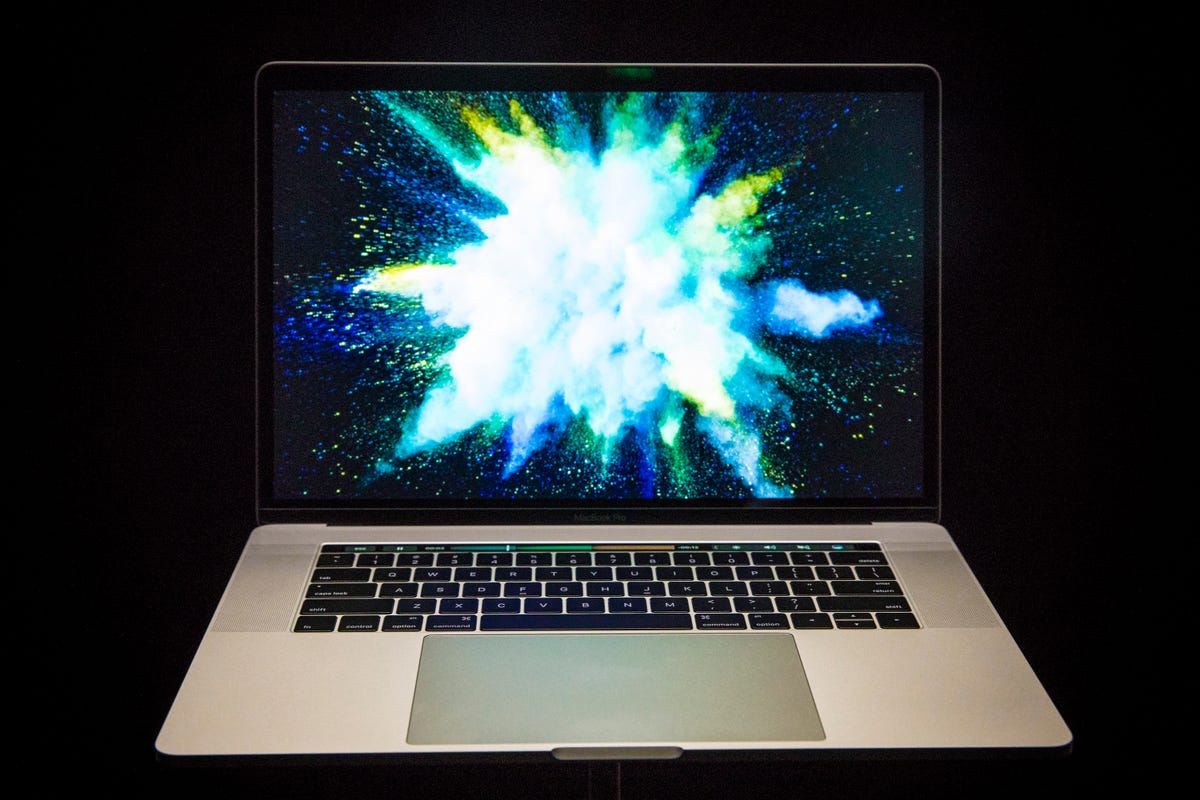
Apple redesigns MacBook Pro laptop line
Apple just revealed its newest MacBook Pro laptop, which includes a new interactive, customizable touch strip above the keyboard called Touch Bar.
All new everything
While Apple kept the MacBook Pro name it's used since 2006, nearly everything about the new generation of the high end notebook has changed.
Thinner, lighter, more powerful
These new laptops are thinner and lighter. That's no surprise, although they don't come close to competing with the slimmest high-end Windows laptops. The 13-inch model is 14.9 mm thick and weighs 3 pounds (about 1.36 kg), while the 15-inch model is 15.5 mm thick and 4 pounds (1.81 kg).
Force Touch trackpad gets 2x larger
The touchpad, which still uses Apple's Force Touch technology, now spans twice the surface area of the previous MacBook Pro's touchpad. It's massive -- completely dominating the front of the interior.
Apple's latest butterfly keyboard mechanism
The keyboard here uses Apple's butterfly mechanism, which allows for shallower keys and a thinner body. Using a very shallow keyboard made sense in the very thin 12-inch MacBook, but it'll come as a bit of a shock for Pro users, who are used to the deep, clicky physical feedback of the current MacBooks.
Improved speakers
Touch Bar magic
The long-rumored "Magic Toolbar," an OLED-display strip for context-sensitive touch commands, is real. Apple calls it the Touch Bar, and it's worth all the hubbub.
Virtually adaptable
Just 60 pixels high (and 2,170 pixels wide), the Touch Bar could be a tool with the potential to be the Swiss Army knife of laptop input, changing itself on the fly to work across different apps, imitating a series of touch buttons, control sliders and even jog dials. This is Apple's answer to the touchscreens found on most Windows laptops.
Touch Bar commands
By default, the Touch Bar displays a command strip view with brightness, volume and other system control functions. When another Apple app is launched, including Photos, Mail, or Safari, the command buttons roll up to the far right side of the strip, leaving the rest of the space free for app-specific commands, which can take the form of buttons, sliders, or dials.
Now featuring Touch ID input
The far right side of the Touch Bar has a small square set aside for a Touch ID input. That's the same fingerprint technology that's in current iPhones, and lets you log into the system and make payments via Apple Pay. You can do that already if you have a MacOS MacBook and an iOS10 iPhone, if the two devices sit close to each other, but in the new MacBook, it's a self-contained system powered by Apple's built-in T1 security chip.
An all new keyboard
While the keyboard on the new MacBook Pro models have the same shallow key travel (an industry term for the distance the key moves downward to register an input) as the version on the 12-inch MacBook, the new "feel" of the keys, and how they register a click gives the keyboard a more substantial feel.
With its context-sensitive OLED secondary display, Apple abandons the pretext that we need a string of F-labeled keys at all.
By default, the Touch Bar displays a command strip view with brightness, volume and other system control functions.
Apple redesigns MacBook Pro laptop line
Taking the place of function keys, the Touch Bar brings up autofill choices as you type, lets you edit videos in Final Cut Pro or straighten photos in the Photos app. Users can also customize the Touch Bar by dragging and dropping new tools into it.
Illuninated Touch Bar
"It provides all your system functions that you're used to up there," said Phil Schiller, pointing to the Touch Bar. "But in a much more attractive, better, adaptable way."
Customizable function keys
Taking the place of function keys, the Touch Bar brings up autofill choices as you type, lets you edit videos in Final Cut Pro or straighten photos in the Photos app.
Emojis on hand
The Messages app naturally gives you a menu of emojis, which you can now access at your fingertips using the Touch Bar.


